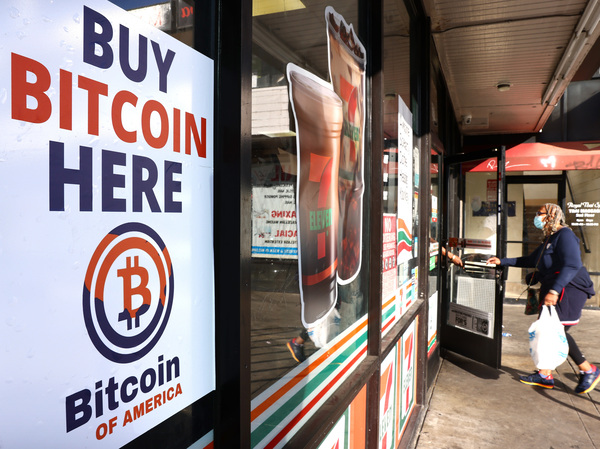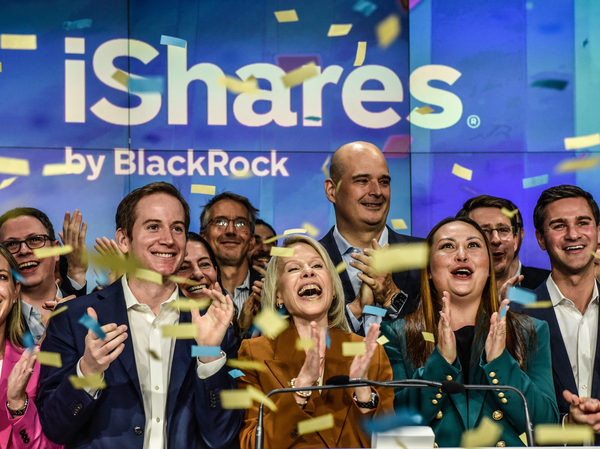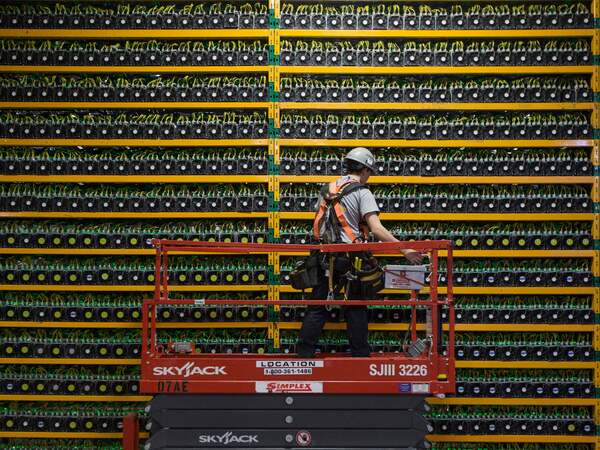
A big event is about to happen in the world of bitcoin: It's called the halving — and some experts believe it will turbocharge a rally in the digital currency.
In broad terms, the halving effectively reduces the supply of new bitcoins. And that presumably should lead to higher prices. It's the scarcity principle. The fewer bitcoins that get mined, the more valuable bitcoin becomes.
But will it? And what does all of this mean? Here's what to know as the big day approaches.
What is the halving?
First the name. Few in the crypto world seems to like the name halving.
But it effectively describes what's going to happen.
And it all involves bitcoin mining.
Just like geological miners — from professionals to amateurs — who mine the earth to discover new diamonds or gold, bitcoin miners must discover something hidden. They solve very complicated math formulas to unveil new bitcoins. (Or in crypto lingo, "a block" is created and then added to a virtual public bitcoin ledger called the blockchain)
Whoever solves the formula first gets a bunch of bitcoins as a prize. It's why miners try to compete in this race by building the most powerful computer networks they can.

But the reward of bitcoin that miners get by finding the solution periodically gets cut in half. This formula was deliberately built into the computational code that makes up bitcoin.
Also deliberately built into the system is the number of bitcoins that can ever exist — the supply is capped at 21 million. So far roughly 19 million tokens have been created.
And every time 210,000 formulas (or blocks) get solved, a halving occurs.
The halving effectively increases the time it will take to reach that 21 million limit — and it also tends to increase bitcoin's value.
The halving has happened roughly every four years, and the next one is expected to happen sometime around April 19 or 20, although that may shift. So far, the halving has occurred three times.
When bitcoin was first created, miners got a stash of 50 tokens when they solved the formula.
That was cut to 25 in the first halving in 2012. Then to 12.5 in 2016. And since 2020, it stands at 6.25 tokens.
And when the next halving happens in a few days, miners will only get 3.125 tokens.
Will the halving spark a rally in bitcoin?
So far it has.
In each of the three previous halvings, bitcoin went on to rally by three-digit percentage points in the year that followed.
But whether the halving itself was the main cause has been a subject of debate.
This debate continues as the next halving looms. Bitcoin has already rallied in the lead-up to the upcoming halving, hitting a record high last month of above $70,000.
Some experts argue that there are other factors that will push up the price of bitcoin this time around, halving or no halving. The fact there is an increasing adoption of bitcoin, for example. And that traders are speculating more on bitcoin.
Also, big investment firms such as BlackRock this year launched spot bitcoin exchange-traded funds (ETFs) — or funds that track the price of bitcoin. That has also led to increased demand for the digital currency.

So this halving — the thinking goes — is coming at a particularly good time for bitcoin.
Not only that: Bitcoin connoisseurs are hoping that the excitement generated around the 2024 halving will also lead to increased awareness and acceptance of the digital currency.
Will the halving cut bitcoin mining's energy consumption?
This is another point of debate.
Bitcoin mining requires an incredible amount of energy, though there's still some uncertainty about exactly how much.
Some believe halvings will force miners to use even more computational power to try to solve the formulas because they now get a fewer stash of bitcoin. According to this logic, miners will react by trying to solve more formulas to get more tokens.
But this is in dispute. Others argue that halvings also force miners to get more efficient because the energy needed to power all those computers is expensive. For example, miners may use more renewable energy or they'll turn to computers that can do more with less power.

Some believe halvings can even lead to less energy being consumed as some of the miners that can't compete any longer will just give up. Paying a lot for energy to obtain just over 3 bitcoin tokens will no longer make financial sense for them, according to this logic.
It's similar to what has happened with extracting oil. As the supply of oil gets reduced and as the fossil fuel gets harder to extract, smaller players drop out, unable to compete with the financial and technological resources of a Big Oil company.
Still, regardless of what happens, one thing's for sure. There's still an incredible amount of energy that will be spent to unveil bitcoin — and it will remain a controversial topic for a while.
Copyright 2024 NPR. To see more, visit https://www.npr.org.
Collected from Minnesota Public Radio News. View original source here.
 Minnesota Public Radio (MPR) is a public radio network for the state of Minnesota. With its three services, News & Information, YourClassical MPR and The Current, MPR operates a 46-station regional radio network in the upper Midwest.
Last updated from
Minnesota Public Radio (MPR) is a public radio network for the state of Minnesota. With its three services, News & Information, YourClassical MPR and The Current, MPR operates a 46-station regional radio network in the upper Midwest.
Last updated from